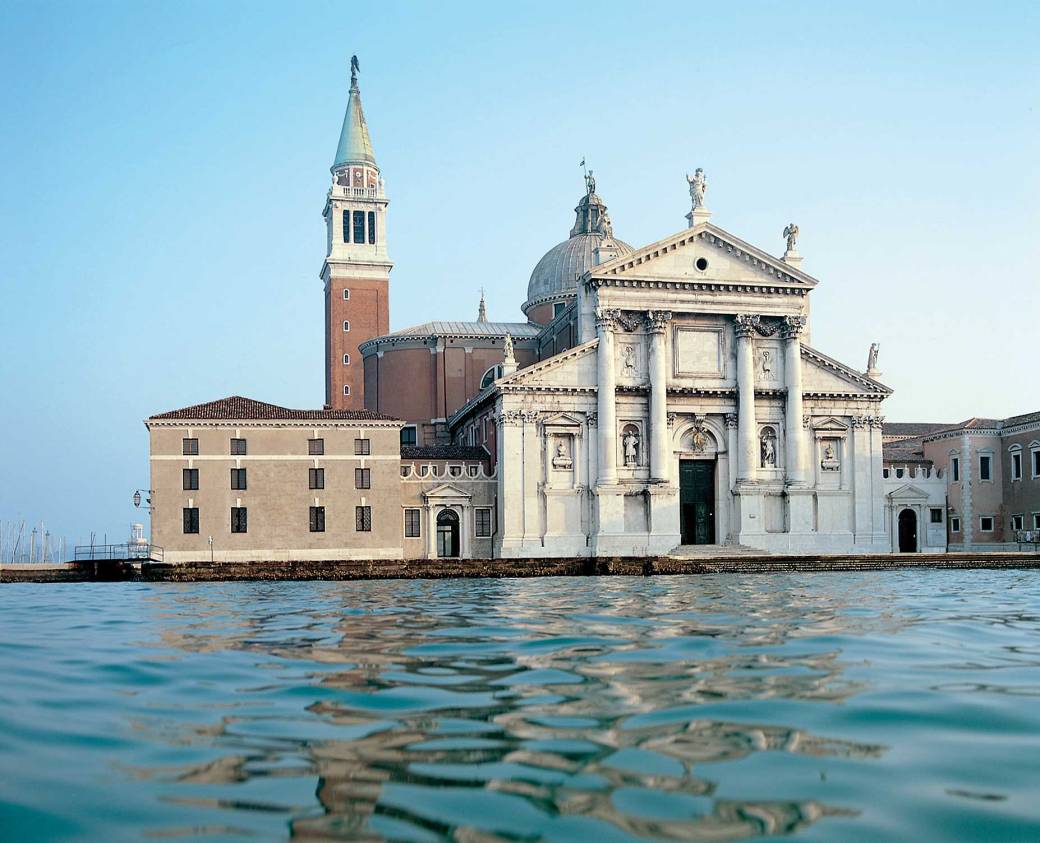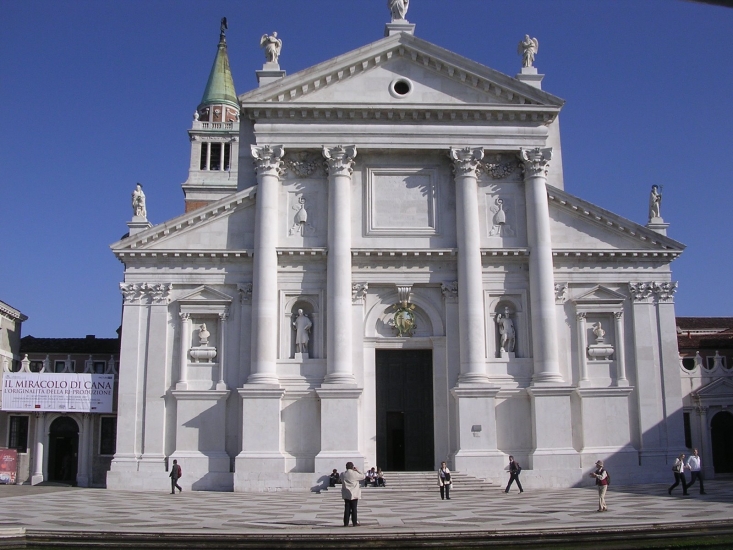 The Island of San Giorgio Maggiore is placed in the middle of the Venetian Lagoon, just in front of St. Mark Basin, only 400 metres from the city and few from the island of Giudecca. Back to the time of the first doges, it was called “Isola dei cipressi” (island of cypresses) and was poorly populated, mostly by workers of the local salt mine and mill.
The Island of San Giorgio Maggiore is placed in the middle of the Venetian Lagoon, just in front of St. Mark Basin, only 400 metres from the city and few from the island of Giudecca. Back to the time of the first doges, it was called “Isola dei cipressi” (island of cypresses) and was poorly populated, mostly by workers of the local salt mine and mill.
In 982, doge Tribuno Memmo gave the island to Benedictine order, and the religious built there a monastery. From this moment, the importance of the island increased a lot. Moreover, in 1108 St. Stephen’s body was buried in the monastery’s church, and this event was celebrated for several centuries with a festival organized on St. Stephen’s day in St. Mark’s basin.
In the following years, San Giorgio Maggiore was continuously embellished by doge Sebastiano Ziani, who was buried there in 1178. Unfortunately, a terrible quake destroyed completely the island in 1223: even the Benedictine monastery was wiped out. The re-building was slow and only in 1419 a new church was consecrated. The construction of the church of St. George (the one we can see today) started in 1566 and was projected by Andrea Palladio with a neoclassical style. It was completed in 1610 by Baldassarre Longhena.

The island lost most of its importance with the end of the “Repubblica di Venezia” in 1797. The convent was suppressed by Napoleon in 1806 and from 1929 the island became a free port, being neglected for decades.
In 1951, thank to the count Vittorio Cini, San Giorgio Maggiore got back to its main role in art and culture. The count, in fact, founded “Fondazione Giorgio Cini”, in memory of his young son who died in an air crash in 1949. That was the beginning of a new life for the island, hosting expositions and shows, congresses and award ceremonies (like the literary award “Campiello”). The Teatro Verde was built in 1952 and was chosen for several artistic events, ballets, concerts and grand opera.
But the main attraction of the island is the church. The façade recalls the one of Basilica del Redentore, not far from there, on the island of the Giudecca, designed by Palladio as well. The church is enriched by several canvas from Carpaccio, Palma il Giovane, Bassano and Tintoretto.
